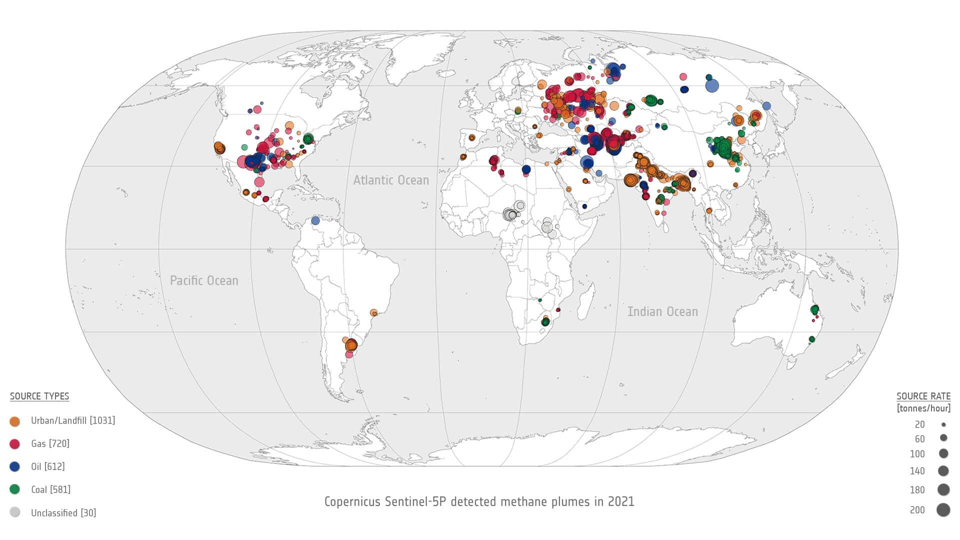Satellites have detected significant methane leaks globally, yet the responsible companies are not taking action to address them.
Methane (CH4) is the second most significant greenhouse gas in the Earth's atmosphere after carbon dioxide (CO2). According to the Intergovernmental Panel on Climate Change (IPCC), it is responsible for more than a third of the warming that humanity is currently facing. Methane has a very short atmospheric lifespan of about 10-20 years. This means that the effects of reducing its emissions will be felt almost immediately, rather than over hundreds of years, as is the case with CO2.
Scientists estimate that nearly 60 percent of methane emissions are anthropogenic, meaning they are caused by human activity and can therefore be managed. The largest sources include oil and gas infrastructure, coal mines, landfills (where decaying waste emits landfill gas, 50 percent of which is methane), and agriculture.
There is an increasing number of technical tools available for detecting methane leaks. For instance, since 2023, the United Nations has been operating the Methane Alert and Response System (MARS), which is a global satellite network that provides timely data on large leaks worldwide.
In 2023, MARS recorded 1,225 instances of significant leaks from oil and gas infrastructure, yet only in 15 cases did governments and companies take action to address the issue, which is less than one percent of the total. This was reported by an international team of ecologists at the UN Climate Change Conference COP29, which is taking place in Azerbaijan from November 11 to 22.
There are several explanations for the inaction of companies and authorities, as explained by the report's authors. Firstly, the culprits may lack the technical or financial resources to rectify the problem. Secondly, some sources of methane leaks are difficult to seal, although emissions from oil and gas infrastructure are the easiest to address.
There is also some positive progress. For example, in 2024, the UN issued several warnings to the Algerian government regarding a methane leak source that had been releasing greenhouse gas into the atmosphere since 1999. In October, satellite data indicated that the issue had been resolved. Sealing this source could reduce emissions equivalent to about half a million cars per year.

Additionally, at the COP29 summit, representatives from approximately 140 companies announced their commitment to undertake credible measurement and reduction of methane emissions.
However, the overall picture remains grim, as emphasized by the report's authors. It shows that monitoring has not yet led to a reduction in methane emissions. The main issue is that often, satellite data alone makes it challenging to identify the owner of the pipeline or well from which the leak occurred, complicating the search for the responsible party.
Methane is a key topic of discussion at the COP29 meeting in Baku. Experts believe this greenhouse gas is a powerful driver of climate change, prompting several countries to develop measures to reduce methane concentration in the atmosphere. For instance, the European Union aims to cut methane emissions by 30 percent by 2030, and at a recent climate meeting, the US and China announced plans to implement various measures to combat emissions. Specifically, in the United States, there is a methane tax for oil and gas companies. However, many experts believe that this tax may be repealed with the return of Donald Trump to power.